Tree Health and Maintenance
6 Best Practices for Post-Planting Tree Care
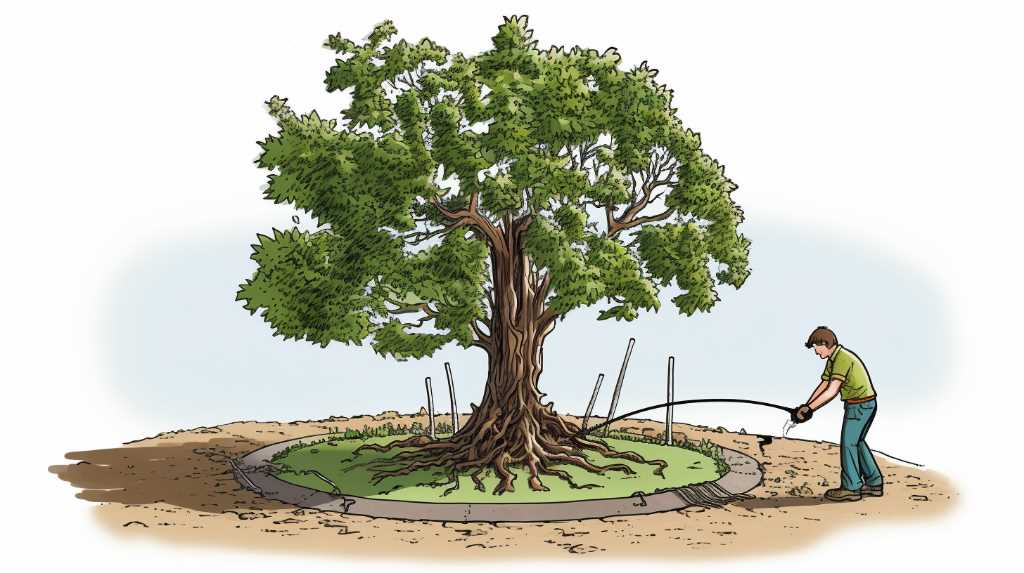

As a tree lover and caretaker, I know the importance of post-planting care for our leafy friends. It’s a delicate time when they need our attention and nurturing to thrive.
That’s why I’m excited to share with you the 6 best practices for post-planting tree care. From watering and mulching to pruning and protecting, these practices will ensure your trees grow strong and healthy.
Let’s dive in and give our newly planted trees the love they deserve.
Watering
I water newly planted trees regularly to ensure they receive enough moisture for healthy growth. Adequate watering is crucial during the establishment phase, as it helps the tree develop a strong root system. I make sure to water deeply, allowing the water to penetrate the soil and reach the roots. This encourages the roots to grow deeper and become more resilient.
It’s important to avoid overwatering, as this can lead to root rot and other issues. To determine when to water, I check the moisture level in the soil by inserting my finger a few inches into the ground. If it feels dry, it’s time to water.
Proper watering sets the foundation for a thriving tree and prepares it for the next step: mulching.
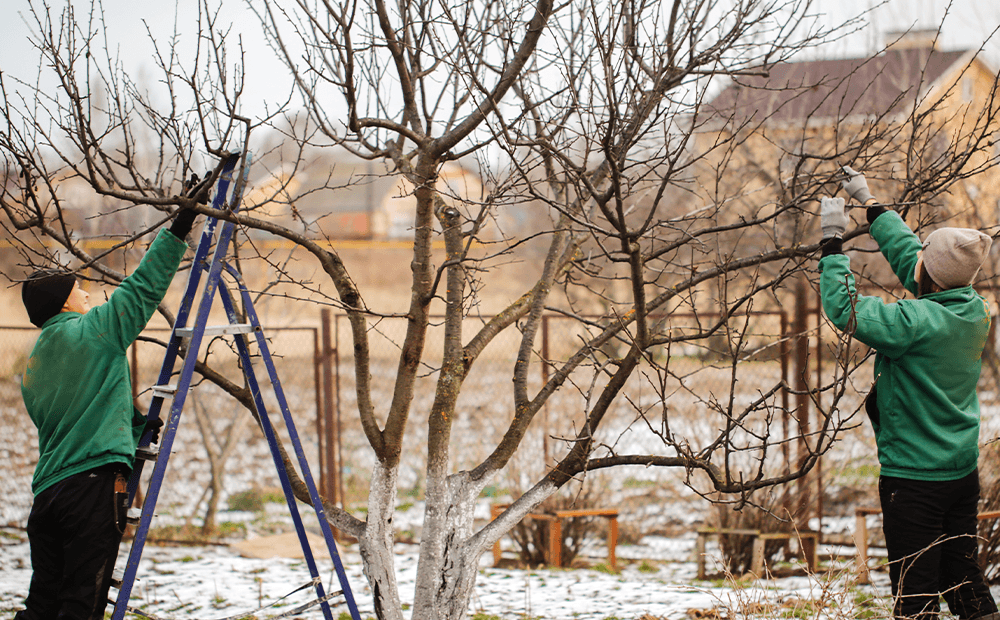

Mulching
After watering, it’s time to move on to mulching the newly planted tree. Mulching is an important step in tree care as it helps to maintain soil moisture, regulate soil temperature, and prevent weed growth.
To mulch the tree, start by removing any grass or weeds within a three-foot radius of the tree trunk. Next, apply a layer of organic mulch, such as wood chips or bark, around the base of the tree, keeping it about two to four inches away from the trunk. Make sure the mulch layer is about two to four inches thick.
Avoid piling mulch against the trunk, as this can promote rot and attract pests. Mulching not only improves the tree’s health but also enhances the aesthetic appeal of the landscape.
Pruning
To promote healthy growth and shape the tree, it’s important to prune it properly. Pruning is the process of removing dead, damaged, or diseased branches, as well as any unwanted growth. It helps improve the tree’s structure, encourages airflow, and reduces the risk of pests and diseases.
When pruning, start by removing any dead or crossing branches. Make clean cuts just outside the branch collar, leaving no stubs. Avoid removing more than 25% of the tree’s foliage in a single pruning session. Regularly inspect the tree for any signs of damage or disease, and prune accordingly. Remember to use sharp, clean tools and follow proper safety precautions.
Pruning is an essential part of tree care and can contribute to the tree’s overall health and appearance.
Fertilizing
When it comes to fertilizing trees, two important factors to consider are the timing of fertilization and the nutrient requirements of the trees. Timing is crucial because applying fertilizer at the right time ensures maximum nutrient uptake and utilization by the tree.


Understanding the specific nutrient needs of the tree is equally important, as different tree species have varying requirements for elements such as nitrogen, phosphorus, and potassium.
Timing of Fertilization
While it’s crucial to provide proper care for newly planted trees, determining the optimal timing for fertilization plays a significant role in their long-term health and growth. When it comes to fertilizing, timing is everything.
It’s important to wait until the tree has had enough time to establish its root system before applying fertilizer. Typically, it’s recommended to wait at least one year after planting before fertilizing. This allows the tree to focus on root development and establish a strong foundation.
Additionally, fertilizing during the dormant season, such as late fall or early spring, is ideal as it allows the tree to absorb and utilize the nutrients effectively.
Nutrient Requirements for Trees
After establishing a strong foundation through proper timing of fertilization, it’s essential to understand the nutrient requirements for trees in order to promote their healthy growth and development. To ensure trees receive the necessary nutrients, consider the following:
- Macronutrients: These essential nutrients are required in large quantities and include nitrogen, phosphorus, and potassium. They play a vital role in tree growth, energy production, and overall health.
- Nitrogen: Promotes leaf and stem growth.
- Phosphorus: Facilitates root development and flowering.
- Potassium: Enhances disease resistance and water uptake.
- Micronutrients: These trace elements are needed in small quantities and include iron, manganese, and zinc. They support various metabolic processes and overall tree vigor.
Monitoring
To ensure the health and growth of newly planted trees, monitoring is crucial. This involves maintaining a regular watering schedule to provide adequate moisture, as well as preventing and addressing pest and disease issues.
Additionally, monitoring soil nutrient levels is essential for identifying any deficiencies and taking appropriate measures to maintain optimal conditions for tree growth.
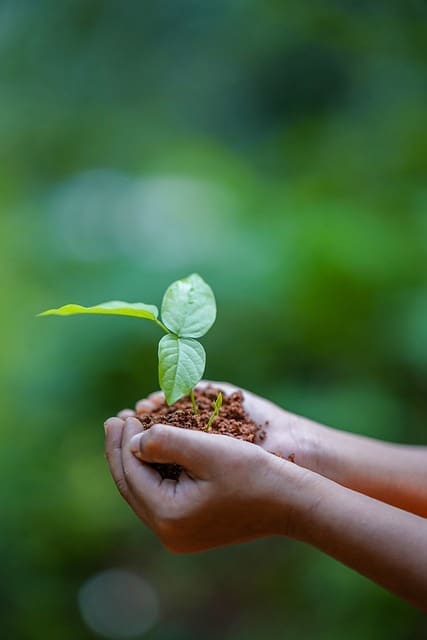

Regular Watering Schedule
I monitor the regular watering schedule for my newly planted trees using an article determiner to ensure they receive adequate hydration. Consistency is key when it comes to watering young trees, as they need a steady supply of moisture to establish strong root systems.
Here are some best practices for maintaining a regular watering schedule:
- Watering frequency: Depending on the weather, I water my trees every 5-7 days during the first year. In hot and dry climates, more frequent watering may be necessary. During periods of heavy rainfall, I reduce watering to avoid over-saturation.
- Watering amount: I provide enough water to thoroughly soak the soil to a depth of 6-8 inches, ensuring it reaches the roots.
By closely monitoring the regular watering schedule, I can help my trees thrive and grow.
Now, let’s move on to the next important topic: pest and disease prevention.
Pest and Disease Prevention
To effectively prevent pests and diseases, I regularly monitor my newly planted trees. By keeping a close eye on their health and inspecting them regularly, I can catch any signs of infestation or disease early on. This allows me to take the necessary steps to address the issue promptly and prevent it from spreading to other trees in my garden.
Monitoring involves checking for any visible symptoms such as discolored leaves, wilting, or unusual growth patterns. I also keep an eye out for any signs of pest activity, such as chewed leaves or webs.
Soil Nutrient Monitoring
For effective soil nutrient monitoring, I regularly test the soil of my newly planted trees. This helps me ensure that my trees are receiving the necessary nutrients for healthy growth.
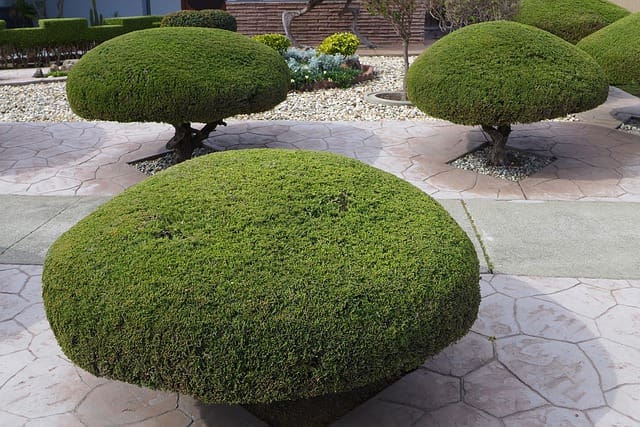

Here are the key reasons why soil nutrient monitoring is important:
- Identifying nutrient deficiencies: Regular soil testing allows me to identify any nutrient deficiencies in the soil, such as low levels of nitrogen, phosphorus, or potassium. This helps me take corrective measures to provide the required nutrients to my trees.
- Preventing nutrient imbalances: Soil nutrient monitoring helps me maintain the right balance of nutrients in the soil. Excessive levels of certain nutrients can be harmful to the trees, so it’s important to monitor and adjust nutrient levels accordingly.
By regularly monitoring the soil nutrient levels, I can ensure the long-term health and vitality of my newly planted trees.
Now, let’s move on to the next section about protecting these trees from potential threats.
Protecting
Regularly monitor and address potential threats to the newly planted tree. Protecting the tree is crucial to ensure its healthy growth and survival.
One common threat is damage caused by wildlife, such as rabbits or deer, who may eat the tree’s bark or foliage. Installing a fence or using repellents can help deter these animals.
Another threat is weed competition, which can rob the tree of essential nutrients and water. Regularly remove weeds from around the tree and apply mulch to suppress further weed growth.
Additionally, extreme weather conditions like strong winds or heavy rain can damage the tree. Provide support with stakes or braces, and prune any damaged or broken branches to promote proper healing.
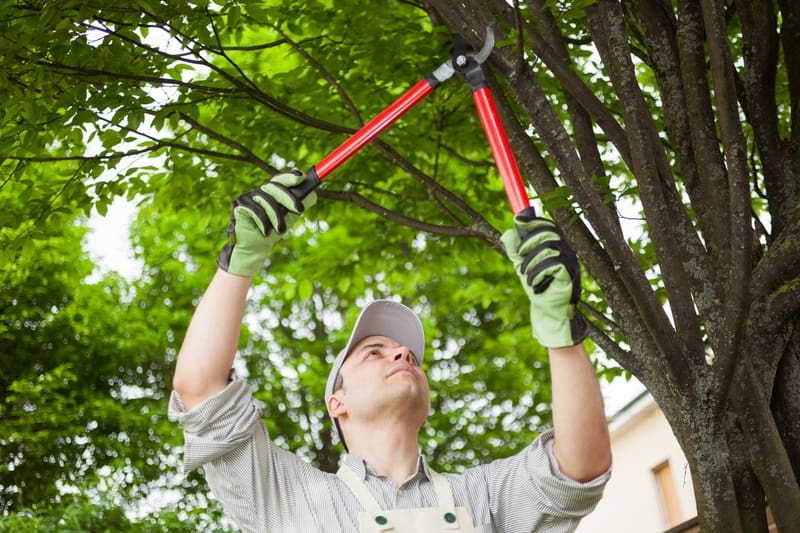



Hello there! I’m Logan Foster, the green-thumbed social media marketer behind the vibrant world of 1800TreeGuy.com. With roots firmly planted in arboriculture, I’ve branched out to help clients cultivate their dream outdoor spaces, one leafy canopy at a time. My knack for nurturing nature is more than a profession—it’s a way of life.
When I’m not talking trees and teaching the art of arboreal care, you can find me cheering on the Bulldogs—my alma mater’s pride and my forever team. My environmental studies there didn’t just teach me about ecosystems; they instilled a lifelong passion for protecting our planet.
Off the clock, I’m an adventurer at heart. Whether it’s trekking the Appalachian trails, pedaling down a mountain path, or crafting guides to share the wonders of the wild, I’m happiest with soil under my nails and the sun on my face. And let’s not forget Yoda, my pug sidekick. He may not have mastered the art of stillness, but his joyful grins are my daily dose of happiness.
I’m all about making connections—between people and the great outdoors and between my clients and their ideal landscape visions. My approach is personal; every tree has a story, and every garden reflects its caretaker.
If you want to green your scene or share in my outdoor escapades, give me a shout on Instagram or Facebook. Let’s cultivate a conversation and grow a community rooted in a love for the lush life.







